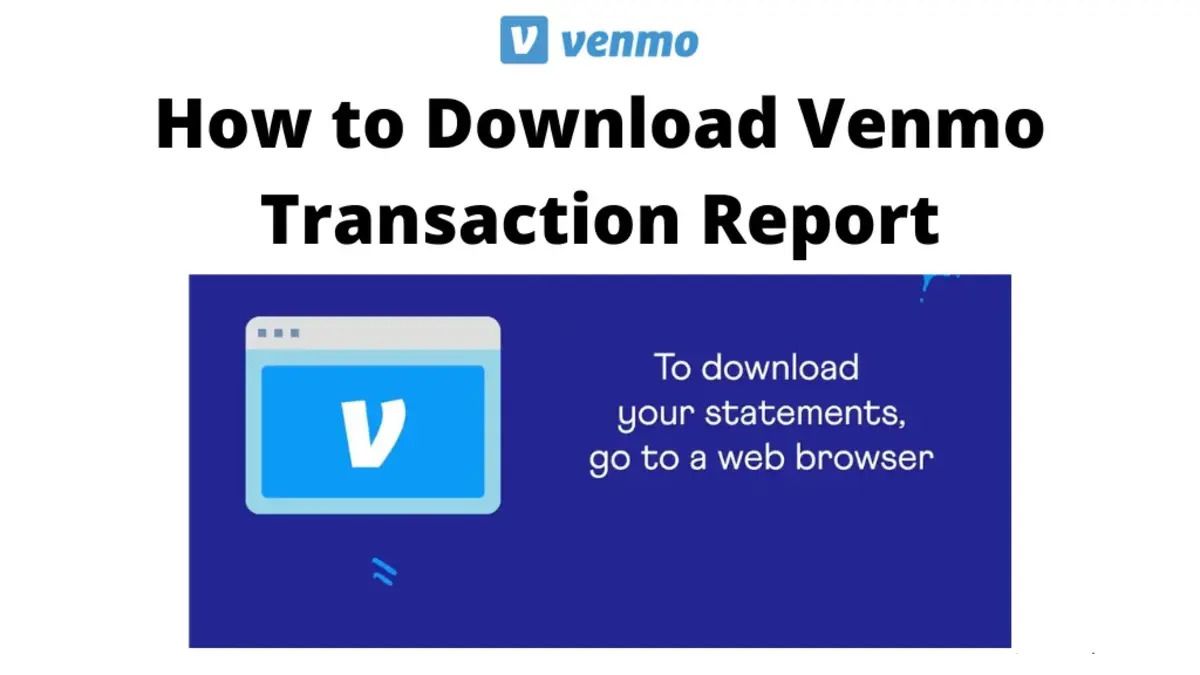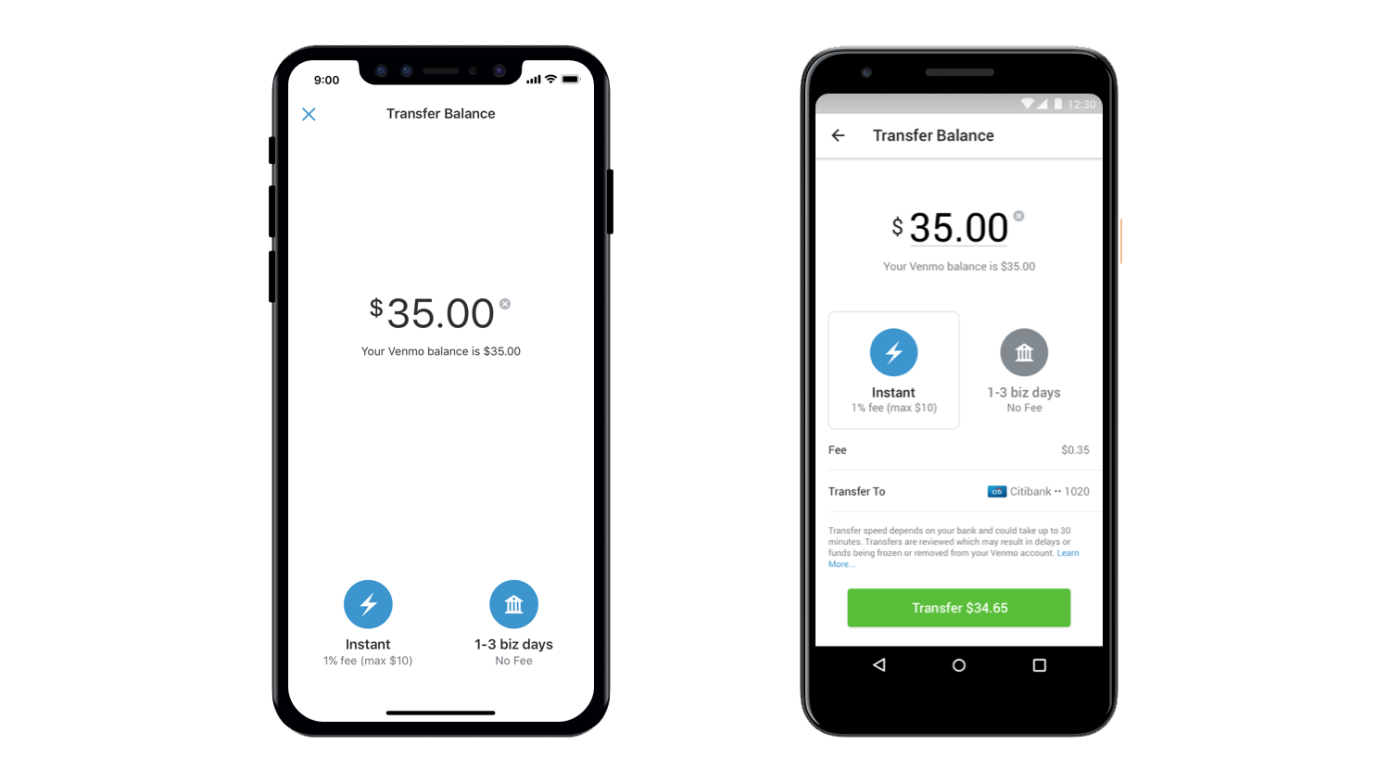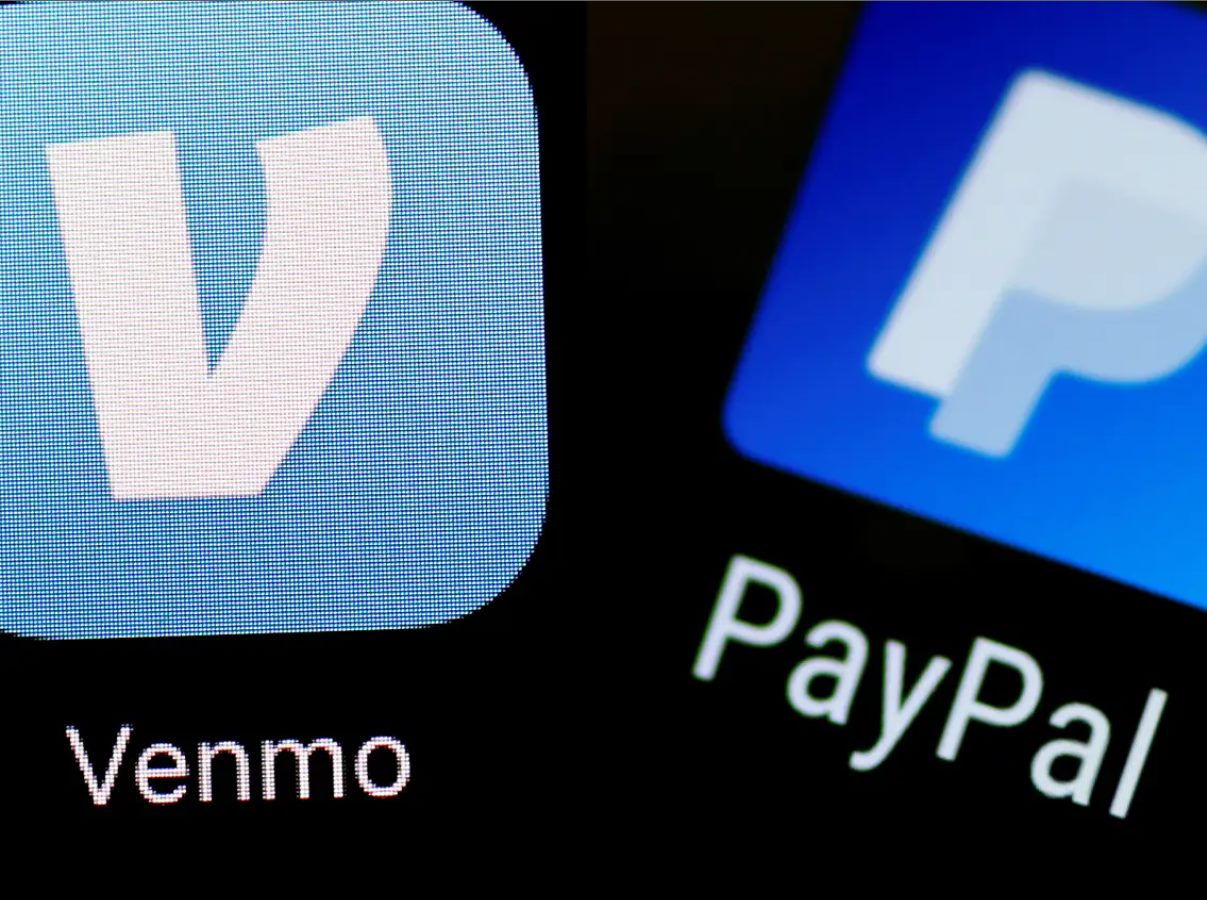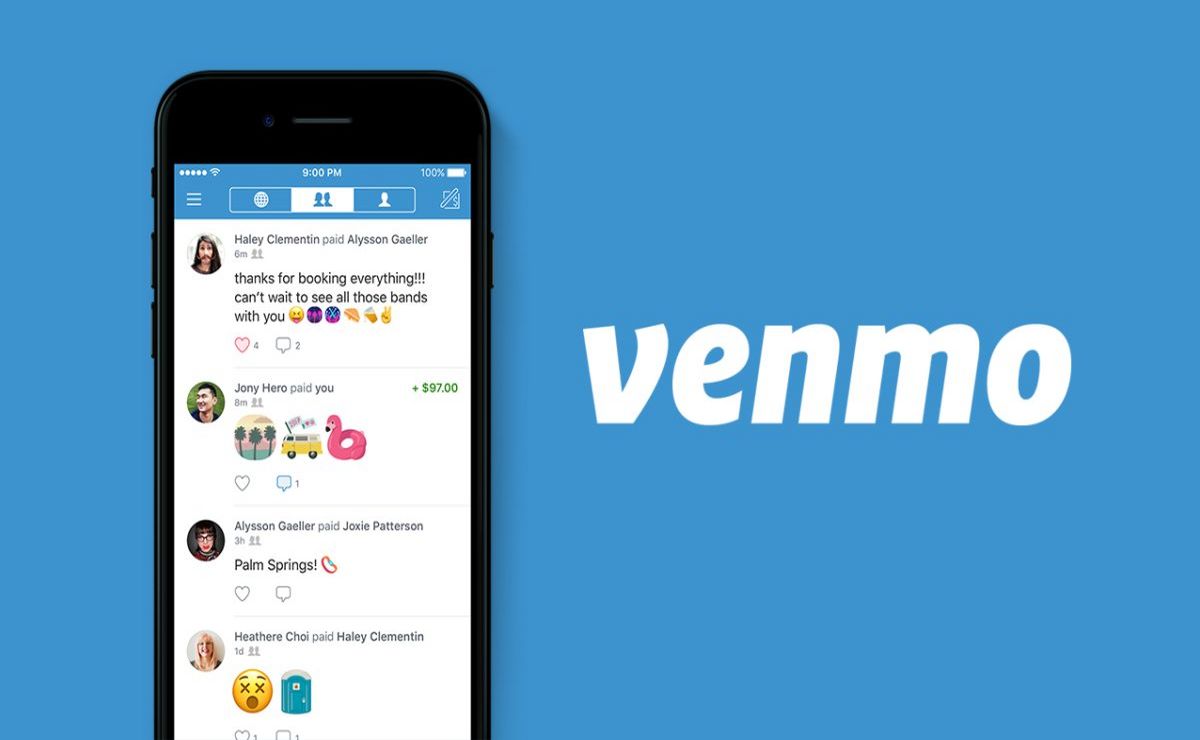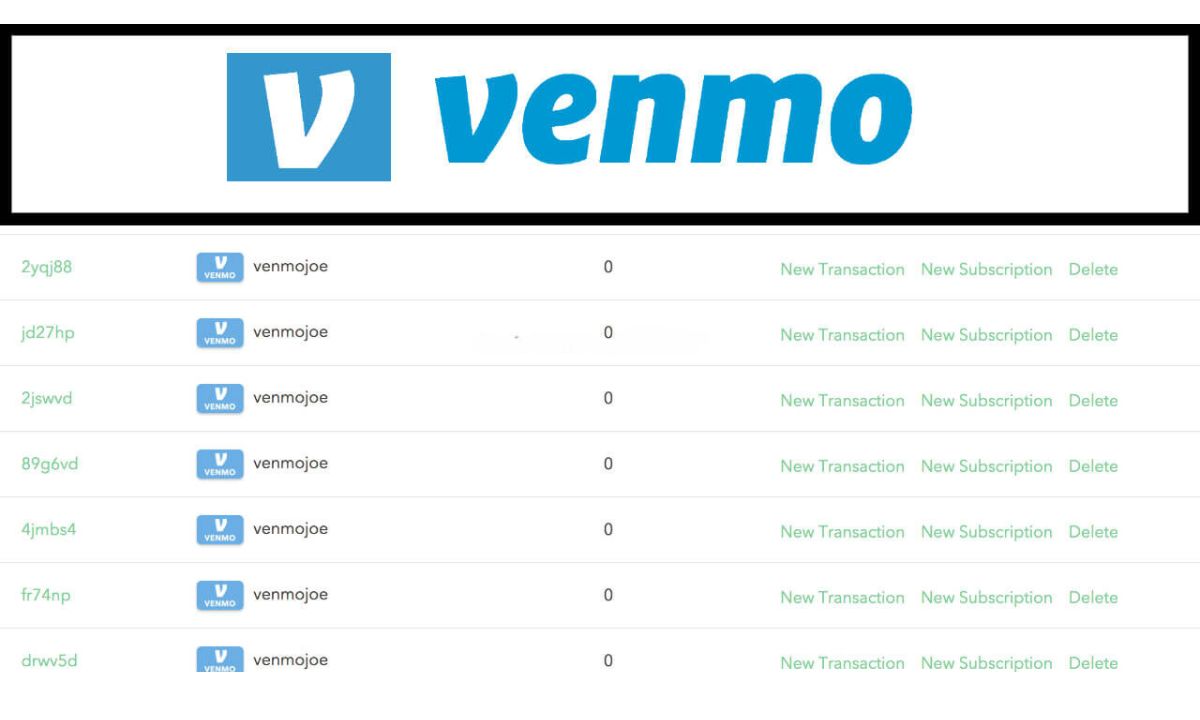What is Venmo?
Venmo is a popular digital payment platform that allows users to send and receive money with ease. It has gained widespread popularity due to its convenience and user-friendly interface. Whether you need to split a bill with friends, pay your share of the rent, or send money to family, Venmo makes these transactions quick and hassle-free.
Venmo essentially functions as a mobile wallet, allowing users to link their bank accounts, debit cards, or credit cards to their Venmo account. Once linked, users can easily transfer funds to other Venmo users by simply entering their username, email address, or phone number. The amount is instantly deducted from the sender’s Venmo balance or linked payment method and credited to the receiver’s Venmo account.
What sets Venmo apart from traditional payment methods is its social element. Users have the option to add a message or emoji to each transaction, which is displayed in their Venmo feed. This makes it easy to keep track of payments and adds a fun and interactive aspect to the platform.
Additionally, Venmo offers features such as splitting expenses, requesting payments, and even making payments to select businesses. Users can split a bill with friends or roommates by simply entering the total amount and dividing it among the participants. Venmo also allows you to request payments from others, which is useful when you need to remind someone about a shared expense.
Overall, Venmo provides a convenient and efficient way for individuals to send and receive money digitally. Whether you’re paying a friend, splitting expenses, or settling bills, Venmo simplifies the process and eliminates the need for cash or checks.
How Does Venmo Work?
Venmo operates as a digital wallet that allows users to make and receive payments with just a few taps on their mobile device. Here’s a breakdown of how Venmo works:
- Sign Up: To get started, users need to download the Venmo app and create an account. They will be prompted to enter their personal information and link a valid bank account, debit card, or credit card to their Venmo account.
- Adding Friends: Venmo connects users with their contacts, making it easy to find and add friends. Users can also search for friends by their username or scan their Venmo QR code.
- Sending and Receiving Money: To send money, users can simply enter the recipient’s username, email address, or phone number, and input the desired amount. They can also add a note to specify the purpose of the transaction. For receiving money, users will receive a notification when someone sends them funds, and the money will be automatically added to their Venmo balance.
- Cashing Out: Users have the option to cash out their Venmo balance to their linked bank account. This process typically takes one to three business days, depending on the user’s bank.
- Privacy and Security: Venmo allows users to control their privacy settings and choose who can see their transactions. Additionally, Venmo employs encryption and security protocols to protect user data and ensure safe transactions.
Venmo also offers additional features to enhance the user experience:
- Venmo Card: Users can apply for a Venmo debit card, which allows them to spend their Venmo balance wherever Mastercard is accepted.
- Social Feed: The Venmo app features a social feed that displays transaction information, including payment amounts, notes, and emoji. Users can like or comment on transactions, adding a social and interactive aspect to the platform.
- Integration with Apps and Online Merchants: Venmo can be used for payments at select online merchants and apps, making it a versatile digital payment solution.
Overall, Venmo simplifies the process of sending and receiving money. Its user-friendly interface, social features, and security measures have contributed to its widespread popularity.
Why is it Important to Know How Venmo Shows Up on Bank Statement?
Understanding how Venmo transactions appear on your bank statement is essential for several reasons:
- Account Management: Knowing how Venmo transactions are reflected on your bank statement helps you easily identify and track your expenses. This is particularly important for budgeting and keeping your financial records organized.
- Verification: Checking your bank statement regularly ensures that all Venmo transactions are accurate and authorized. By reviewing your statement, you can quickly identify any suspicious or fraudulent activities associated with your Venmo account.
- Tax Purposes: When it comes to filing taxes, having a clear record of your Venmo transactions on your bank statement can be invaluable. It makes it easier to track and categorize your income and expenditures, which is vital for accurate tax reporting.
- Budgeting and Planning: Understanding how Venmo transactions appear on your bank statement allows you to effectively track your spending habits and make informed decisions about budgeting and financial planning.
- Communication with Your Bank: In certain instances, you may need to provide proof of a specific transaction or resolve any discrepancies with your bank. Having a clear understanding of how Venmo transactions appear on your bank statement can help facilitate communication and ensure a smooth resolution.
Additionally, being aware of how Venmo transactions are displayed on your bank statement can help avoid confusion and prevent any misunderstandings with your bank or financial institution. This knowledge allows you to easily differentiate between Venmo transactions and other types of transactions, such as direct deposits or debit card purchases.
Overall, understanding how Venmo shows up on your bank statement provides valuable insights into your financial transactions, supports accurate recordkeeping, and helps you maintain control over your financial matters.
How Venmo Transactions Appear on Your Bank Statement
When you review your bank statement, Venmo transactions will typically appear as electronic funds transfers or EFTs. This is because Venmo operates by transferring money electronically between bank accounts. Here are some important details to note:
- Payer and Payee Information: The bank statement will display information regarding the sender (payer) and receiver (payee) of the Venmo transaction. This allows you to easily identify who initiated or received the payment.
- Date and Time: The bank statement will indicate the date and time of the Venmo transaction. This information helps you track when the money was sent or received.
- Transaction Description: Venmo transactions on your bank statement will include a brief description to provide context for the transaction. This typically includes the words “VENMO” or “VENMOPAYMENT” followed by the name or username of the recipient or a brief note about the payment purpose.
- Transaction Amount: The bank statement will clearly state the amount of the Venmo transaction. This allows you to verify that the correct amount was transferred and keep track of your spending.
It’s important to note that the exact format and details of Venmo transactions on your bank statement may vary depending on your bank or financial institution. Some banks may provide more detailed descriptions, while others may provide limited information.
Additionally, it’s worth mentioning that some banks may group multiple Venmo transactions into a single entry on the bank statement. This means that several transactions made within a specific time frame may be consolidated into one entry, with a total amount displayed for that period. This is done for the purpose of streamlining the statement and reducing clutter.
If you have any specific questions or concerns about how Venmo transactions appear on your bank statement, it’s advisable to reach out to your bank directly. They will be able to provide you with accurate and personalized information based on their specific banking practices.
By understanding how Venmo transactions are displayed on your bank statement, you can easily track your payments, identify specific transactions, and maintain accurate financial records.
Understanding Venmo Descriptions on Bank Statements
When reviewing your bank statement, it’s important to understand the descriptions associated with Venmo transactions. While these descriptions can vary, they typically provide specific information about the transaction. Here are some key points to consider:
- Venmo Username or Name: The bank statement may display the Venmo username or name of the recipient. This allows you to quickly identify the individual involved in the transaction.
- Note or Memo: Venmo provides an option to include a note or memo when sending or receiving money. If the sender added a note to the transaction, it may be displayed as part of the description on your bank statement. This can provide additional context about the purpose of the payment.
- Emojis or Symbols: Venmo allows users to use emojis or symbols to enhance their payment descriptions. These visual elements may also be included in the bank statement description, adding a colorful touch to your transaction history.
- Payment Purpose: If the sender provided a specific purpose for the payment, such as “rent,” “dinner,” or “groceries,” it may be included in the description on your bank statement. This can help you categorize your expenses and identify the context of the payment.
It’s essential to carefully review the description provided on your bank statement to ensure that it aligns with your expectations and records. If you notice any discrepancies or unfamiliar descriptions, it’s recommended to investigate further to ensure the accuracy of the transaction.
However, it’s worth noting that bank statements may sometimes abbreviate or truncate the descriptions to fit within their character limits. In such cases, you may need to refer to the Venmo app or website for a more detailed description of the transaction.
If you have any questions or concerns regarding the Venmo descriptions on your bank statement, it’s advised to reach out to your bank or Venmo customer support for clarification. They can provide specific guidance based on their record-keeping practices.
Understanding Venmo descriptions on your bank statement is crucial for accurate record-keeping, tracking expenses, and maintaining transparency in your financial transactions.
How to Identify Venmo Transfers on Your Bank Statement
When reviewing your bank statement, it’s important to be able to identify Venmo transfers accurately. Here are some tips to help you easily identify Venmo transfers on your bank statement:
- Search for Account Names: Look for the mention of “Venmo” or “Venmo Payment” on your bank statement. This is a common identifier used by banks to indicate Venmo transfers.
- Look for Specific Descriptions: Many banks include additional details in the transaction description field. Venmo transfers may have additional information such as the Venmo username of the sender or recipient or a note about the purpose of the payment. Use these details to confirm that the transaction is related to Venmo.
- Check the Amounts: Venmo transfers on your bank statement will include the exact amount that was transferred. Compare this amount to your Venmo transaction history or records to ensure accuracy.
- Compare Dates and Times: Match the date and time of the Venmo transfer on your bank statement with the corresponding transaction in your Venmo account. This will help you confirm that the transfer aligns with your activities.
- Review Recurring Transfers: If you have set up recurring Venmo transfers, such as weekly or monthly payments, look for patterns on your bank statement. This can help you quickly identify recurring Venmo transfers and distinguish them from other transactions.
It’s important to note that banks may have slight variations in how they present Venmo transfers on the statement, so familiarize yourself with the specific conventions used by your bank. If you are uncertain about any transactions or need more information, don’t hesitate to contact your bank’s customer support for assistance.
Keeping a record of your own Venmo transactions, including the recipient’s Venmo username and any additional notes, can also help you identify Venmo transfers on your bank statement more easily.
By following these steps and being attentive to the details, you can confidently identify Venmo transfers on your bank statement and maintain accurate records of your financial transactions.
Tips for Keeping Track of Venmo Transactions on Your Bank Statement
Keeping track of your Venmo transactions on your bank statement is crucial for maintaining accurate financial records and staying on top of your finances. Here are some helpful tips to assist you:
- Maintain Detailed Records: Keep a separate record of your Venmo transactions, including the date, recipient, purpose, and amount. This will help you cross-reference and verify the transactions listed on your bank statement.
- Consistently Review Your Bank Statements: Make it a habit to review your bank statements regularly. Set aside time each month to carefully examine and reconcile the Venmo transactions listed. This will allow you to quickly identify any discrepancies or unfamiliar transactions.
- Use Digital Banking Tools: If your bank offers a mobile app or online banking platform, take advantage of these tools. They often provide detailed transaction history, search options, and the ability to categorize transactions. Utilize these features to easily locate and track your Venmo transactions.
- Organize Transactions by Category: Create categories or labels for your Venmo transactions to track specific types of payments, such as rent, utilities, or dining out. This organization will make it easier to analyze your spending patterns and create a comprehensive budget.
- Set Notifications: Enable notifications in both your Venmo app and banking app to receive alerts whenever a transaction occurs. This allows you to stay informed about any incoming or outgoing payments and reduces the risk of missing important transactions.
- Employ Digital Wallet Tools: Venmo offers options for adding notes or memos to each transaction. Take advantage of this feature by including relevant details, such as the purpose of the payment or the individuals involved. These notes will serve as helpful reminders when referring back to your bank statements.
- Track Reimbursements: If you are frequently reimbursed for expenses through Venmo, make sure to track these transactions separately. Use labels or notes to identify reimbursed amounts and ensure they are properly recorded in your financial records.
- Stay Informed: Keep up to date with any changes or updates to Venmo’s policies, security measures, or transaction fees. Being aware of any modifications will help you accurately interpret the information on your bank statement.
By implementing these tips, you can effectively keep track of your Venmo transactions on your bank statement, maintain organized financial records, and stay in control of your spending.
Common Questions About Venmo and Bank Statements
Here are some common questions that arise regarding Venmo transactions and bank statements:
- Why is it important to review my bank statement for Venmo transactions?
- What should I do if I notice an incorrect Venmo transaction on my bank statement?
- Do Venmo transactions include the recipient’s name or username on my bank statement?
- Can Venmo transactions be easily distinguished from other types of transactions on my bank statement?
- What should I do if I don’t recognize a Venmo transaction on my bank statement?
- Are Venmo transactions categorized differently on bank statements?
- Can I access detailed Venmo transaction history directly from my bank statement?
Reviewing your bank statement allows you to verify the accuracy of your Venmo transactions, track your spending, and identify any unauthorized or fraudulent activities associated with your Venmo account.
If you identify an incorrect Venmo transaction on your bank statement, contact Venmo’s customer support immediately. They will guide you through the process of disputing the transaction and resolving any issues.
Yes, most bank statements will display the recipient’s Venmo username or name as part of the transaction description. This helps you identify who the payment was sent to.
Yes, Venmo transactions are typically identifiable on bank statements by specific keywords or descriptions, such as “Venmo” or “Venmo Payment.” Additionally, the presence of the recipient’s username or a transaction note can further indicate a Venmo transaction.
If you come across an unfamiliar Venmo transaction on your bank statement, double-check your Venmo transaction history for any matching transactions. If you still cannot identify the transaction, reach out to Venmo customer support to investigate further and ensure the security of your account.
The categorization of Venmo transactions may vary between different banks. Some banks may group Venmo transactions under a general “Electronic Funds Transfer” category, while others may specify Venmo as a separate category. Check your bank’s statement layout or reach out to their customer support for more information on how Venmo transactions are categorized.
Bank statements typically provide a concise summary of Venmo transactions. For access to more detailed Venmo transaction history, it is recommended to refer to your Venmo app or website, as these platforms offer comprehensive transaction records.
Remember, if you have any specific questions or concerns about Venmo transactions and your bank statement, it’s always best to reach out to your bank or Venmo’s customer support for accurate and personalized assistance.
Conclusion
Understanding how Venmo transactions appear on your bank statement is essential for managing your finances effectively. By recognizing the descriptions and details associated with Venmo transfers, you can easily track and reconcile your transactions with confidence.
By following the tips provided, such as maintaining detailed records, regularly reviewing your bank statements, and utilizing digital banking tools, you can efficiently keep track of your Venmo transactions. This will help you stay organized, monitor your spending patterns, and identify any discrepancies or unauthorized transactions.
It’s important to note that while Venmo transactions are typically identifiable on your bank statement, specific conventions may vary between banks. Familiarize yourself with the layout and categorization used by your specific financial institution to ensure accurate understanding of your Venmo transactions.
Remember, if you have any concerns or questions about Venmo transactions and their appearance on your bank statement, don’t hesitate to reach out to your bank or Venmo’s customer support. They will provide detailed and accurate information specific to your situation.
By staying vigilant and proactive about monitoring your Venmo transactions on your bank statement, you can maintain control over your finances, track your spending, and enjoy the convenience of digital payments with peace of mind.







